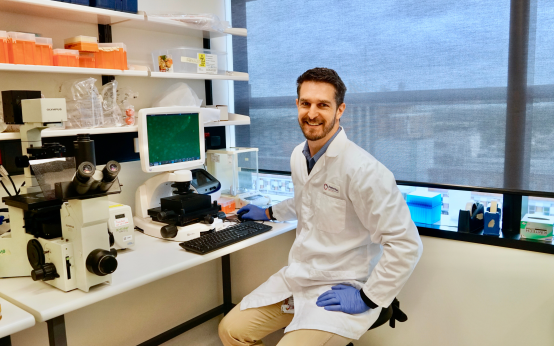Study mutation-targeted prodrug for leukemia treatment may help more patients
A new study conducted by experts at Australia's Peter MacCallum Cancer Center has found a prodrug for treating blood cancers may help more people than previously thought.

A new study conducted by experts at Australia’s Peter MacCallum Cancer Center has found a prodrug for treating blood cancers may help more people than previously thought.
Nicholas Clemons, group leader of the center’s cancer evolution and metastasis program, said in a statement on Thursday that the study “highlighted an additional mode of action for the treatment known as eprenetapopt, opening up its potential to work in a broader group of acute myeloid leukaemia (AML) and myelodysplastic syndrome (MDS) patients.”
Functioning as a reactivator to induce tumor cell death, eprenetapopt, as the study pointed out, was developed as a TP53-mutation targeted therapy and is currently under clinical investigation in TP53-mutated MDS and AML.
“The treatment was initially thought to only target patients with the TP53 mutation,” Clemons said. “However, we believe it could be beneficial to substantially more patients.”
According to fellow researcher Kenji Fujihara, the research team found that eprenetapopt triggers a cell death called ferroptosis, which is reliant on iron.
“This is an exciting development as cancer cells can become resistant to the usual means of cell death known as apoptosis,” Fujihara said.
According to the statement, MDS changes into AML in about a third of all diagnosed people, and in Australia, around 900 are diagnosed with AML each year. Given that only 10 to 15 percent of AML patients carry the TP53 mutation, researchers regarded it as beneficial to open the treatment to a broader group.
Clemons noted that the treatment is undergoing clinical trials and this new discovery will hopefully give more patients who need new treatment options a chance to beat their cancer.
“We’re now also interested in finding out what other cancers outside of AML/MDS might benefit from this new activity of the drug,” he added.







